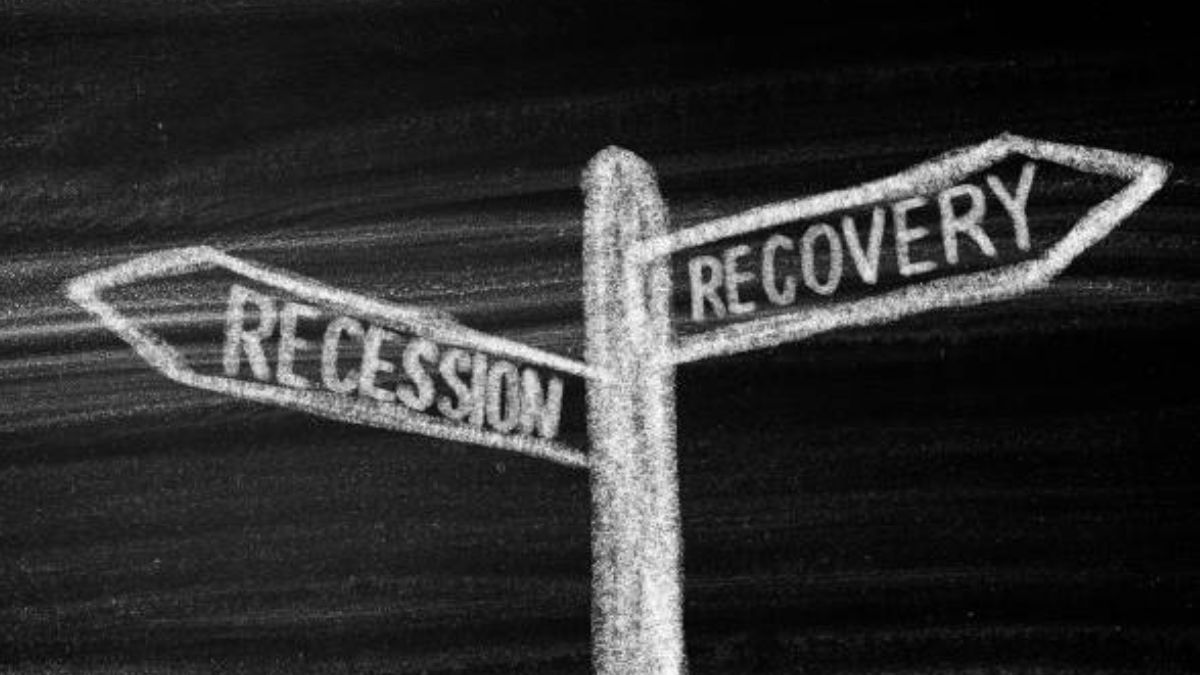- By Vaamanaa Sethi
- Fri, 21 Jul 2023 06:52 PM (IST)
- Source:JND
Analysts had speculated a big recession likely to hit the US economy by now, as the US Fed has been relentlessly increasing the rates since last year. However, more than half a year has passed and no signs of recession can be seen.
Reports of inflation cooling down and unemployment gone down to 3.6% in the US is making analysts wonder whether a recession is coming at all.
According to a Goldman Sachs Research report, the probability of a U.S. recession in the coming year has declined, as recent economic data signal that bringing inflation down to an acceptable level will not require a downturn.
Also read: US Likely To Go Into Recession? Here’s What Experts Say
Goldman Sachs economists predict that there’s a 20% chance of recession in the next 12 months, down from their projection of 25%. “That’s still slightly above the unconditional average post-war probability of 15% — a recession has occurred approximately every seven years — but far below the 54% median among forecasters in the latest Wall Street Journal survey (which is down from 61% three months ago),” said the Goldman Sachs report.
Considering the worst case scenarios, even if the US is hit by a recession, this is not going to be the first time.
Short History of Great Recession of 2008-09
The Great Recession of 2008 and 2009 was said to be the worst economic downturn in history since the Great Depression. In 2008, Domestic product declined 4.3%, the unemployment rate doubled to more than 10%, home prices fell roughly 30% and at its worst point, the S&P 500 was down 57% from its highs in the US.
The Great Recession, which eventually ended in a global crisis, caused six million households to lose their homes, according to a report by Forbes. Unprecedented reforms were implemented during that time and are said to be still in place today.
Between 2004 and 2006, the U.S. Federal Reserve raised the federal funds rate from 1% to 5.25%, and the rates on subprime ARMs also rose at the same time.
Also read: Yatharth Hospital IPO: All You Need To Know About Stock Price, Issue Date And Other Details
In fact several major financial institutions did not survive the complete breakdown in 2008. For instance, investment bank Bear Stearns was acquired by JPMorgan Chase in April 2008 for a price of $10 per share, which was about 94% below its 52-week high.
In September 2008, investment bank Lehman Brothers, which had a market capitalization of $60 billion just 18 months prior, filed for bankruptcy protection.
According to reports, the US government was forced to step in to issue aggressive bailouts to prevent a domino effect of closures throughout the U.S. economy.
The Federal Reserve was also forced to take unprecedented monetary policy measures during the Great Recession to protect the financial system. From September 2007 to December 2008, the Fed implemented 10 interest rate cuts, bringing the fed funds rate down from 5.25% to essentially zero, as per Forbes report.
In February 2009, new president Barack Obama passed the $789 billion American Recovery and Reinvestment Act, which played a major role in bringing an end to the economic recession. The stimulus package included $212 billion in tax cuts and $311 billion in infrastructure, education and health care initiatives.
The S&P 500 reached its 2009 low of 666 on March 6, 2009. By March 23, the index was up more than 20% from its lows.

